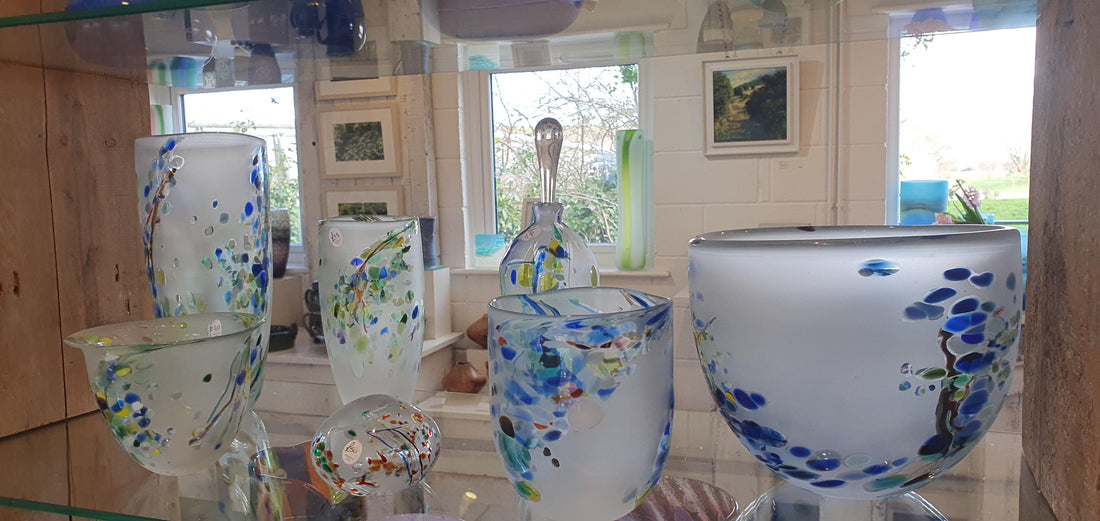For this blog post, and others on Will's ranges, I'm handing over the 'blog baton' and it will be in his words. Of course, if he says anything I don't like, I can just edit it out! Here, in the first of our posts about his ranges we're focusing on Seagrass - one of his most popular ranges.
"I love snorkelling in the shallows. Sometimes I forget to breathe in the deep waters because I get too excited by colours and imagery.
I've been very fortunate to go to the Caribbean and the Azores to go snorkelling and I particularly like it when the sea is a little bit rough, and it's sunny. I find myself looking at the colours, flashes of fish, shells, light being prismed into different colours above you, but generally it’s all about movement. Whenever I think about the Seagrass range, I think about a particular trip in Grenada where the concept came from. When the sea's a bit stormy, the water can be cloudy and that's when I'd take heaps of photographs. If I was a serious snorkeller then I’ve have to cut my moustache off, but I can’t go that far. Generally I’d come back with sunburnt back and neck and oodles of photos of bits of sea. So Seagrass came from there. There's also beautiful snorkelling on the Scilly Isles where the seagrass is so abundant off Tresco and Bryher.
When I first created this range, it was quite literal. Greens, blues, golds. Then one day, I’d made a heavy seagrass bowl and I took a photo of it. I used Photoshop and wondered what the monochrome button would do and I saw an image of this bowl with all whites and blacks and I really liked it.
After editing that picture, I remember the next day it had been snowing, so the imagery was suddenly very relevant. A whole group of us went to go sledging at Wellington Monument, drove down a road with the branches above us, covered in snow, and the imagery was almost identical to that of the picture. Back in the workshop it became Arctic Seagrass. A perfect example of two different ideas that have been put together.
Once you’ve decided it’s a sellable range, or pattern or technique, you can then start experimenting with different colours. So for Seagrass I had original, Arctic, and Spring Blossom.
Now I have to make it good enough that someone will pay for it. Work has to be aspirational both for me and then for the customer. Everything I make, I want someone to buy it. A piece has to speak to someone, be something more than a momento, so that someone will get so much pleasure out of it that it will remind them of a time or a place.
Some people buy pieces because they like them, some because it reminds them of something. It has to speak something enough to them that they like it. Whether that’s visceral or on a deeper level.
To create the range I use multi-coloured chips of glass, with canes, which are long pulled pieces of glass. There are three vistas on each piece, which loosely links to one strand of seagrass and all the things that went on around it. I really like the idea of the water being misty or opaque and the colours need to glitter. I mask out the colours with PVA resist and then sandblast the piece. We turn off the oxygen and the silver oxide colours give us a mirror finish on a few of the pieces. The colours on Seagrass always have to go on the outside. When we first starting making them we used different colours on the inside, but I didn’t like it as much as the pieces with no colour inside.
Like all ranges you look at them and think wow, werent’t the early ones great, and with others you think, oh now they’re much better.
Whenever I make seagrass 'I think must go snorkelling again'."

